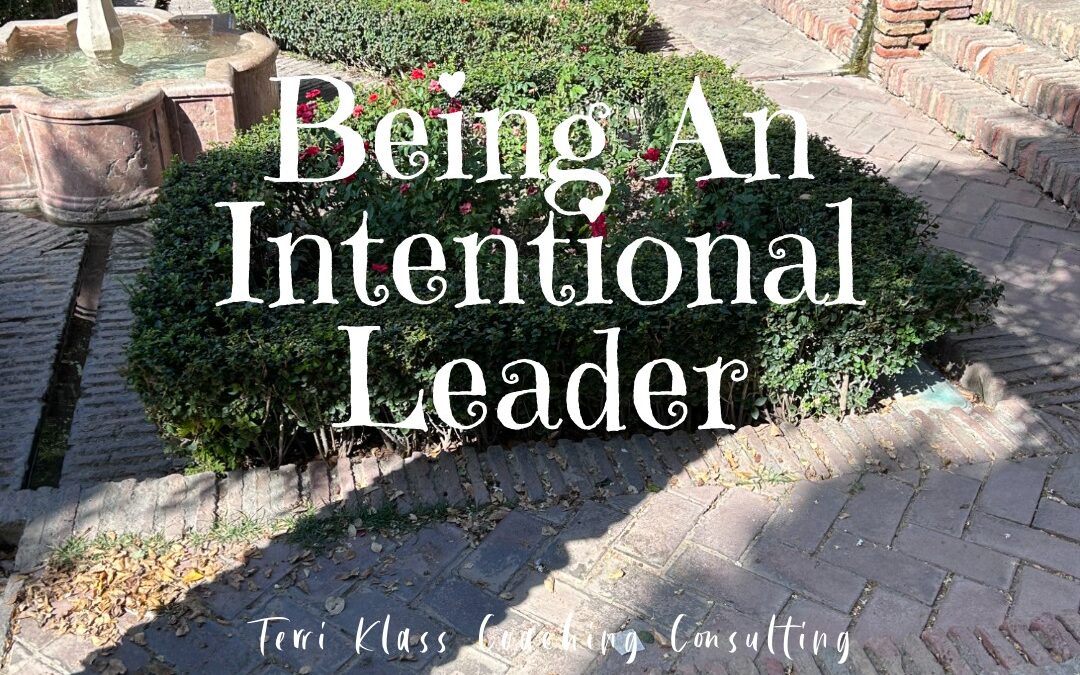In my coaching sessions and leadership programs we often share thoughts about what leadership means to each person. It can be thought- provoking listening to each leader’s take on what goes into impactful leadership. We begin the discussion thinking about the leaders we have met along the way that have impacted us the most. Of course the leaders may be from many different parts of our lives- parents, friends, siblings, colleagues, current or past bosses, someone we volunteer with, teacher or sports coach. Some of the comments were:
“A leader is someone who everyone respects.”
“ A leader is an approachable person who is easy to speak with about anything.”
“A leader is curious and welcomes feedback.”
“A leader is trustworthy and will never throw me under the bus.”
“A leader helps their team members shine and be their best.”
Each of these perspectives of leadership has a common element of being purposeful. A leader ‘s actions and attitudes are not merely haphazard thoughts but rather can only be accomplished with focused intention. So if we choose to lead from wherever we are, we need to be intentional.
Here are five pivots from random to intentional leadership:
1. Move From Sitting On The Sidelines To Leaning In
It is easier to stay in our little cocoons at work or in our careers than to take a risk and lead a new project. It may be more time consuming to roll up our sleeves to help meet the team’s tight deadline than letting other team members finish what they were assigned. It can be less stressful to keep our mouths shut even when we have good ideas to offer than stand up for what is best for the organization. Lead with intention and commitment.
2. Leave Behind Judging Others For Being Respectful
Accusing and blaming other team members for mistakes made instead of holding ourselves accountable is no way to lead. Show respect to everyone you connect with by:
- Showing empathy when problems arise and helping out.
- Not making assumptions about someone’s actions.
- Shifting from using negative language to offering positive suggestions.
- Disagreeing in a respectful way.
3. Swap Out Indecision For Taking Clear Action
Intentional leaders model clear decision-making by not getting stuck in the weeds. Leaders can become paralyzed waiting for the perfect set of data or information prior to making a decision. Instead say to yourself that no decision is far worse than acting on what makes the most sense based on the analytics and input you have.
4. Rejigger A Fixed Mindset For A Growth Mindset
In order for leaders to be intentional they need to possess a growth mindset. According to Carol Dweck, Professor of Psychology at Stanford University, we need to keep growing and learning to be successful. In her famous TED talk, she shares her research on the power of “yet”. Similarly, intentional leaders need to:
- Keep an open mind to what is unfamiliar to them.
- Not be afraid to make mistakes and fail.
- Believe they can improve and learn new skills.
5. Say Goodbye To “Me Centric” And Welcome “Customer Centric”
Finally to lead with intention we need to put our team members and clients first. In a Harvard Business Review article, Denise Lee Yohn explains that companies need to create a “customer centric” culture by understanding what internal and external customers really need and meet those needs as quickly and effectively as possible. We can’t lead with random acts towards our customers but rather focused actions that align with the client’s expectations.
How have you evolved into an intentional leader? What pivots have enabled your intentional leadership?
Curious about becoming a more intentional leader? Just reach out for a complimentary coaching call.

